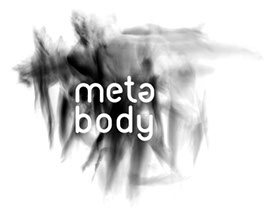International Metabody Forum - IMF 2015 Weimar
Affordances of Symbiosis
Rethinking interaction and
the immeasurable potential of the body
in the age of ubiquitous computing
The Mouse has been in use for the last 50 years as the main interaction device of the computer. Although HCI has been well-established as a branch of study starting from 80’s, only lately did our relation to computers start changing with mobile devices’ touch screens. Meanwhile, computing has become ubiquitous and, while still imprecise, increasingly we are interacting with them based on bodily control, from public doors to TV control to interactive art works.
The teapot has a handle, the mouse has a shape that fits in the palm, books have pages to turn, while computer interaction is becoming increasingly based not only on physical objects that reduce movement to very discrete traceable parameters, but on bodily gestures captured by cameras and sensors.
How can we reinvent affordances of the body in its continuous motion while challenging the reductive approach of ubiquitous computing?
Software is re-shaping the 21st century's concept of the body. It is converting it into an object of measurement and calculation, reducing it to numbers. At the same time, machine perception of the body may blur the boundary between "normal" and "abnormal". Reflecting on disability, we question the premise of software. From this perspective, what is commonly referred to as disability, with all of its "negative" implications, becomes a positive quality of difference and plurality. It is an appreciation of the body for its yet unknown qualities; for what it can do, instead of what it is.
We are asking if a new definition of body -one which removes the boundaries between normal and abnormal, able and disabled, measurable and immeasurable- can be based on a redefinition of affordances. Affordance as the indeterminate potential of the body to move in yet unthinkable ways. Affordance as an open-ended potential of relation.
How can we facilitate such affordances in our deterministic and probabilistic world of ubiquitous control? "What can a body do?” becomes, "What can the affordances of the body become", understood as motion and relation, as openended potential, as relational ecologies, in our symbiotic life.
Topics:
rethinking digital/physical affordances in the posthuman/cybernetic era
digital affordances, ubiquitous surveillance and control
affordances of capture and prediction
digital affordances and movement capture/reduction
the interface
digital affordances and affective production
emoticon culture and ubiquitous commercial music
Virtual Reality, Augmented Reality, AI, robotics, videogaming
affordances of simulation
screens, keyboards, mouses, cameras
expanding the renaissance paradigm & control affordances
visual affordances and the fixation of perception
manual affordances and subjective control
ubiquitous computing and mobile devices
invisible affordances of control
perceptual history of digital affordances, from Greek theatre architecture and Euclidean geometry, to Renaissance perspective, cameras, mechanism and information.
wearables, internet of things, smart homes and the new landscape of digital affordances
the new revolution of control and ubiquitous surveillance
genetics and epigenetics as evolutionary potentials for interaction
nanoaffordances
embodiment in the digital era
software and hardware as embodied affordances
perceptual affordances and sensory hierarchies: vision, hearing, touch, crossmodal and multimodal approaches
enactive cognition and affordance theories
affordances and embodied knowledge
interaction and intra-action in affordance
design towards a new ecology of affordances
ethics of perception beyond visual domination
diffuse/indeterminate affordances and openended relational ecologies
towards an architecture of indeterminate affordances
non-functional design, indeterminate architecture and diffuse affordances
interaction, palpability and synaesthesia
affordances of crossmodal sensing
interactive environments and inclusion
METABODY is a 5 years project starting July 2013, with the support of the European Commission and the participation of 38 partners from 16 countries, coordinated by Reverso.
METABODY will elaborate a critique of the unsustainable tendencies of cultural homogenization of Information Society and develop new communication technologies that highlight the embodied differences in expression and communication, developing interactive multi sensorial laboratories of perception and movement integrated in a mobile experimental interactive/intra-active architectural structure and embodied social network for performances, installations, workshops, seminars, residencies and continuous research, that will tour throughout nine European cities.
Palindrome and IMM collaboratively organizing IMF 2015 Weimar.
